Antique Display Shelf (博古架)
by Ang Yik Han
The term “bo gu” (博古) is derived from an inventory of antiques stored in the Xuanhe Palace commissioned by the Song Emperor Huizong. The published compilation consisting of 30 volumes was titled “bo gu tu”( 博古图) or diagrams of antiques. Subsequently, the shelves used in the Song palaces to display choice antiques came to be known as “bo gu” shelves. Over time, such shelves became popular outside of the royal court and appeared in the homes of the landed gentry, where they were used in studies and other private spaces to display antiques, curios and art pieces. Ranging in size from cabinets to small tabletop display racks, they still provide an Oriental touch for many homes today.
In Chinese art, antique display shelves containing various items with auspicious or felicitious connotations often appear as decorative motifs. However, few have been observed as tomb decorations at Bukit Brown. A rare pair can be seen at Ong Sam Leong’s tomb on the carved panels adjoining the Earth Deity’s altar.
The following objects can be seen on the panel on the left (from right to left)
- a vase with peony flowers – peace and prosperity.
- a tripod fruit platter containing a peach, a pumpkin and a citron – the fruits symbolise longevity, fertility (especially male offspring) and happiness. Collectively, they are known as the “3 Abundances”.
- what seems to be a Western clock – this may be an admonition to descendants to be mindful of time which waits for no man.
Those on the right panel are (from left to right)
- a censer with threading incense smoke above – fertility and generations which go on and on
- a container with a staff from which hangs a chime (bell) in the an “ao yu” or dragon fish – the character for chime in Mandarin is phonetically similar to “wishing” and the “ao yu” finds common use in an idiom which means “to be the best” (独占鳌头), so this could be an expression of wishing (descendants) to take the lead in all their endeavours
- a container with what seems to be a pair of forceps used with incense
- what looks like a branch from a plum tree – the plum blossom is admired for its resilience so this could be the implied meaning here
This is another example of the fine tomb sculpture which adds to the elegance of the tombs of Bukit Brown.
Editor’s Footnote : The same features were discovered on a tomb in the deep undergrowth of Lau Sua by Brownies exploring the area. Clothed in moss, the features are still discernible and the tomb itself is pretty grand!
For the Love of Flowers – The 4 Loves
by Yik Han
Amongst the fine tomb sculpture found in Bukit Brown are depictions of men in the company of flowers. Lest one gets the wrong impression, these are actually based on four historical personalities from ancient China. Collectively, the carvings form a set known as the “4 Loves”.
The peony (牡丹) is known as the king of flowers not without good reason. During the reign of Emperor Xuanzhong (唐玄宗), the Tang Dynasty was at the height of its power. The opulence of the Tang capital, Changan, was known far and wide and the residents lived a lavish life of luxury. The Emperor was a lover of the peony and his palace was filled with breeds from all over the empire. His fondness for the flower was only surpassed by his affection for his favourite consort. At a palace banquet to celebrate the full bloom of the peonies, the Emperor called upon the poet Li Bai to compose a poem fit for the occasion. The intrepid Li Bai readily came up with a verse which likened the beauty of the flower to that of the Lady. This lady, who was to inspire poems through the ages, was none other than Royal Concubine Yang (杨贵妃), one of the four classical beauties of ancient China. She was to meet an ignominious end when disgruntled generals demanded that she be put to death. Till today, the vivacious peony retains its traditional association with wealth and prosperity.
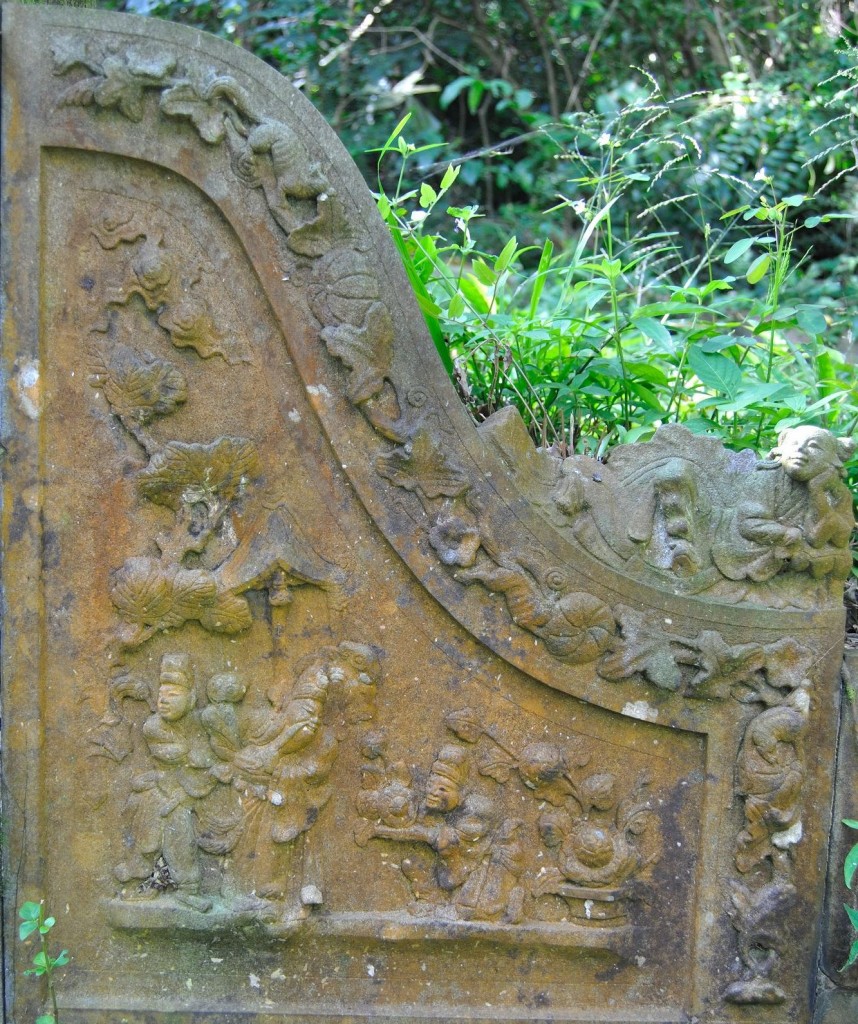
The Emperor is easily recognized by his stately robes, and his palace attendants hover near as he admires his beloved peonies. (photo Yik Han)
In contrast with the celebration of the material life during the Tang, learned men of the Song Dynasty advocated the cultivation of the inner spirit. A weak and corrupt administration coupled with reverses against foes abroad led to many shunning officialdom, preferring instead the life of a recluse to uphold one’s principles and dignity. The favoured flower of this period was the plum blossom (梅). Its delicate feminine beauty belied the indomitable spirit attributed to it as it blooms during the harsh winter months. The story of Lin Bu (林逋) and his beloved plum blossoms epitomised this trend. Lin, who lived a simple and quiet life during the Song Dynasty (960-1279), was interested in neither fame nor riches. A bachelor all his life, he indulged himself in cultivating plum trees and rearing cranes to such an extent that his contemporaries said that “the plum tree is as his wife and the cranes his children”. The plum blossom’s stoic beauty saw its adoption as the national flower of the Republic of China (ROC) in 1928.
Unlike the plum blossom with its lofty attributes, the chrysanthemum is a much simpler creature which represents the carefree life. Tao Yuanming (陶渊明) was a Song Dynasty poet who chose to stay aloof from court intrigues and retired to spend his days with his beloved chrysanthemum flowers. The state of mind which transcends all cares has been captured in his own verse.
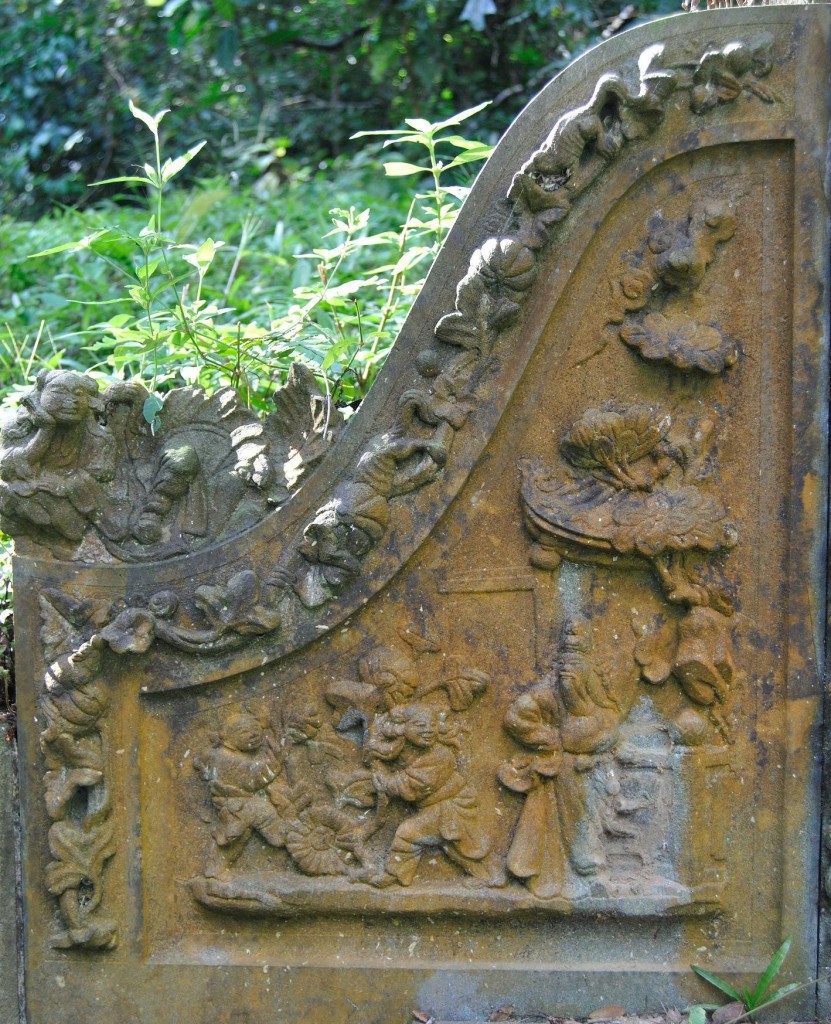
Tao Yuanming in his humble garb tending to his chrysanthemums, easily recognisable by their many petals.(photo Yik Han)
采菊东篱下 悠然见南山
“While picking asters ‘neath the Eastern fence
My gaze upon the Southern mountain rests”
(Translation by Yang Xianyi and Gladys Taylor)
The last of the quartet, the lotus is known for its association with the Song philosopher Zhou Dunyi’s (周敦颐). The “Ode to the Lotus”, arguably his most popular verse, explains his preference for the lotus above all other flowers.
自李唐來,世人甚爱牡丹。予独爱莲之出于泥而不染,濯清涟而不妖 。
“Since the Tang Dynasty, many love the peony. My fondness is solely for the lily as it stays pure even though it grows in mud. After cleansing with water, it does not become bewitching.”
The lotus flower has often been taken as an allegory of how a gentleman should behave, abiding by his principles while navigating the treacherous paths of the world.
In Bukit Brown, carved panels depicting the “4 Loves” can be found on the shoulders (the stone slabs adjoining the tombstone) of tombs from the 1920s and 30s. Usually, only two of the flowers are depicted; only where there are double tombs with four tomb shoulders to utilise will the full set be present. One of these rare examples is the double tomb of Tok Cheng Tuan and his wife which is due to make way for the new highway.
The four flowers have an additional association with the seasons as they are supposed to bloom at different times: lotus (summer ), peony (spring), chrysanthemum (autumn), plum (winter). This is thematically similar to the grouping “Four Friends of the Seasons”, a favoured theme for objects adorning the study and implements of the literati, in which the bamboo is substituted for the peony. In addition, a variant of the “4 Loves” encountered in traditional Chinese art uses the association of the poet Su Dongpo with ink stones or geese. This variant has yet to be encountered in Bukit Brown.
Other posts by Yik Han on tomb aesthetics:
The Dragon King, The Emperor and a New Wife….
The most spectacular cluster of tombs at Bukit Brown belonging to Ong Sam Leong and family is resplendent with carved panels which depict stories from epic Chinese classics.
Ang Yik Han shares 2 panels of a story in the Chinese classic “Journey to the West”
Panel 1 from:
“After touring the underworld, the spirit of Emperor Taizong returns”
游地府太宗还魂
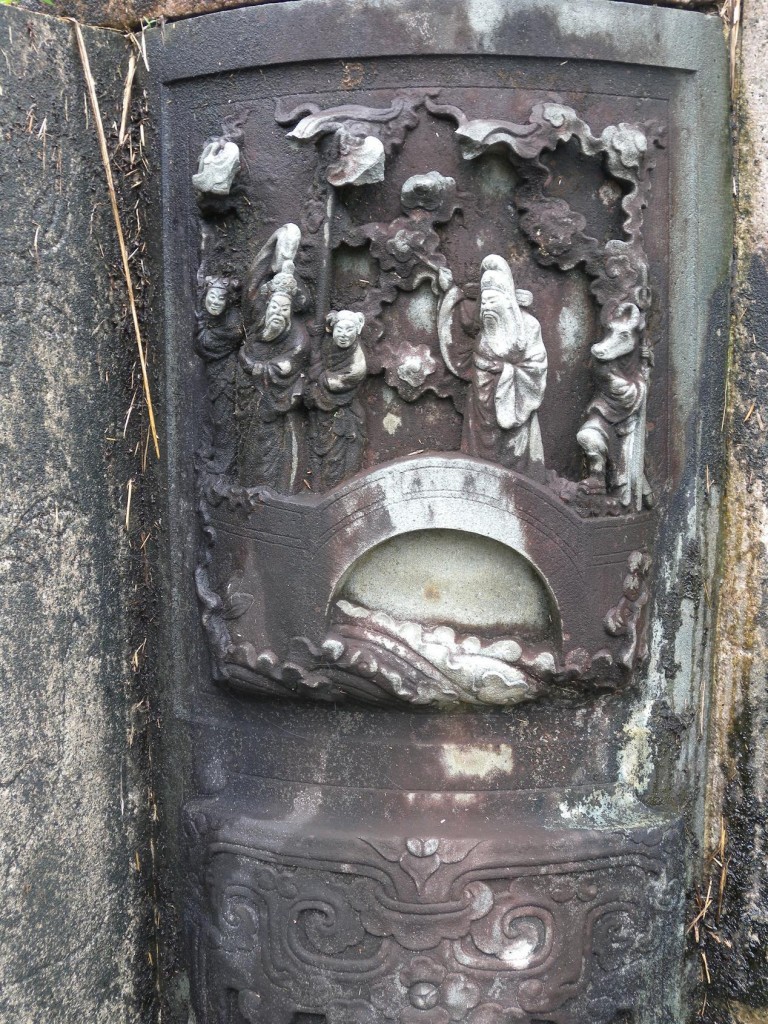
Underworld official adds 2 strokes to character as Emperor flanked by 2 companions look on (photo Yik Han)
Background: One of the dragon kings ran afoul of celestial law and was sentenced to be executed by an official at the Tang court. The desperate dragon turned to the then Emperor, Li Shiming (李世民), and beseeches him not to allow the official to go to sleep as that was the time the deed was supposed to be done. The Emperor agreed to help and promptly summoned the official to play chess overnight with him. During the game however, the official dozed off and in that short interval his spirit went off and slew the dragon king.
进瓜果刘全续配
By a strange coincidence, different forms of mosaic art flourished in the West and East independently of each other. The renowned Byzantine mosaics have their parallels in the “jian nian (剪黏)” or cut and paste mosaic sculptures of Southern China. This decorative technique is widely used in traditional architecture, particularly in the elaborate sculptures adorning the roofs of temples in the Fujian and Chaozhou regions. Migrants from these regions brought the technique abroad and mosaic sculptures can be seen in many traditional buildings in Singapore and Malaysia.
A cemetery is not the usual place to find an ornate temple roof but the art of “jian nian” has nevertheless managed to find its way into Bukit Brown. On Hill 4, at the tomb of Mdm Yeoh Siew Kheng (commonly known as the “5 cats” tomb due to the presence of 5 lions), a lavish display of “jian nian” mosaics can be seen. There are the five lions, a pair of male attendants and tableaux featuring the 8 immortals. Even the Chinese characters of the tomb couplets are mosaics.
Time and the elements have not been kind to these art pieces but enough remain to give a hint of the once gay colours and resplendent forms.
So far, this is the only instance of “jian nian” mosaic sculptures found in Bukit Brown. With so many tombs unexplored there may be more surprises in store.
夹马异香 A Riddle From a Tomb At Bukit Brown
Contributed by Wang Cheng Min
While searching for the biggest grave at Bukit Brown, I chanced upon this grave, drawn to its unusual mirror- like stand .
I could not fathom the significance of the structure. And moved on to look for clues in the 2 pillars which flanked the tombstone and was stuck by the only two characters on each of the pillars.
The pillar on the left read 夹马 (squeeze the horse with your calves).
The pillar one on the right read异香 (extraordinary fragrance). I was wondering why 夹马异香 was used. It appeared to me that this could well be a riddle. But it had become far too hot to decipher what it means at Bukit Brown.
I studied the photographs of the pillars at home and came up with this answer:
走 (walk) is the answer for 夹马 (squeeze the horse with your calves to move the horse forward)
异香 (extraordinary fragrance) is from 八月放异香 – a riddle which 桂花is the answer. There is a classic song called “八月桂花遍地香” – ” August is the month for full boom of Osmanthus.” I therefore deduced that 八月 is the answer for异香.
Buy some good 桂花 tea to experience the unique fragrance of 桂花.
When I put 走 and 八月 together, it is 赵. 赵 – Zhao (Hanyu Pinyin) – the surname of the deceased’s husband.
夹马=走
异香=八月
走+八月=赵
The riddle夹马异香solved at last!
But the mirror, eludes me.
Editor’s postscript: A few days hours after Cheng Min posed his riddle on the facebook group he got word from a tomb keeper that clocks were once embedded in such mirror structures . But not this one; the mystery continues, tick tock tick tock tick tock
About Cheng Min: he loves reading ancient Chinese literature including books by Taiwanese Master Nam Huai Jin (南怀谨老师).
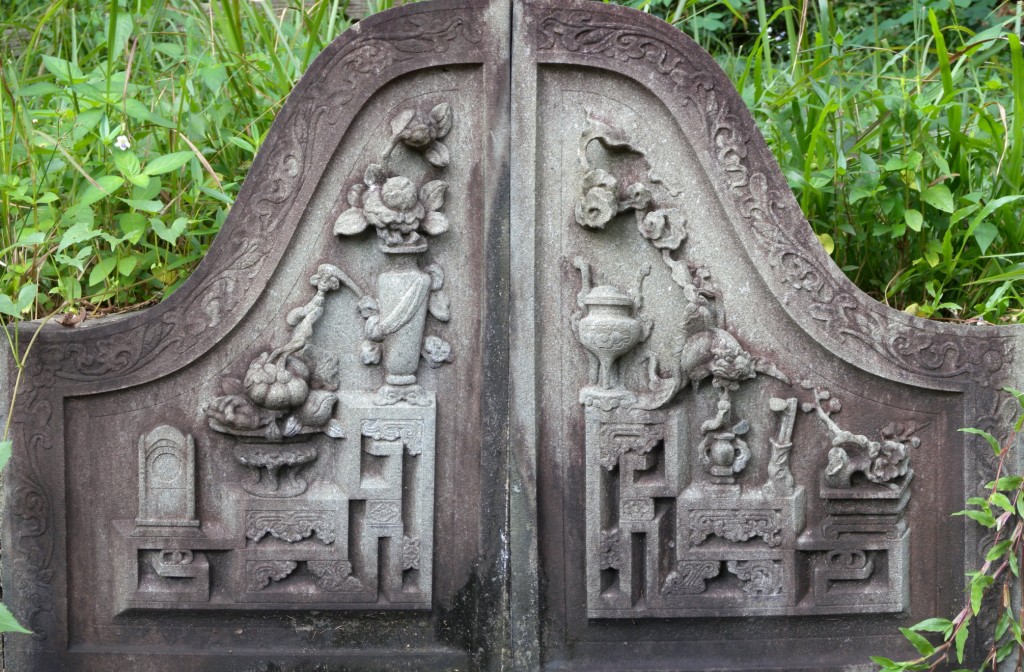
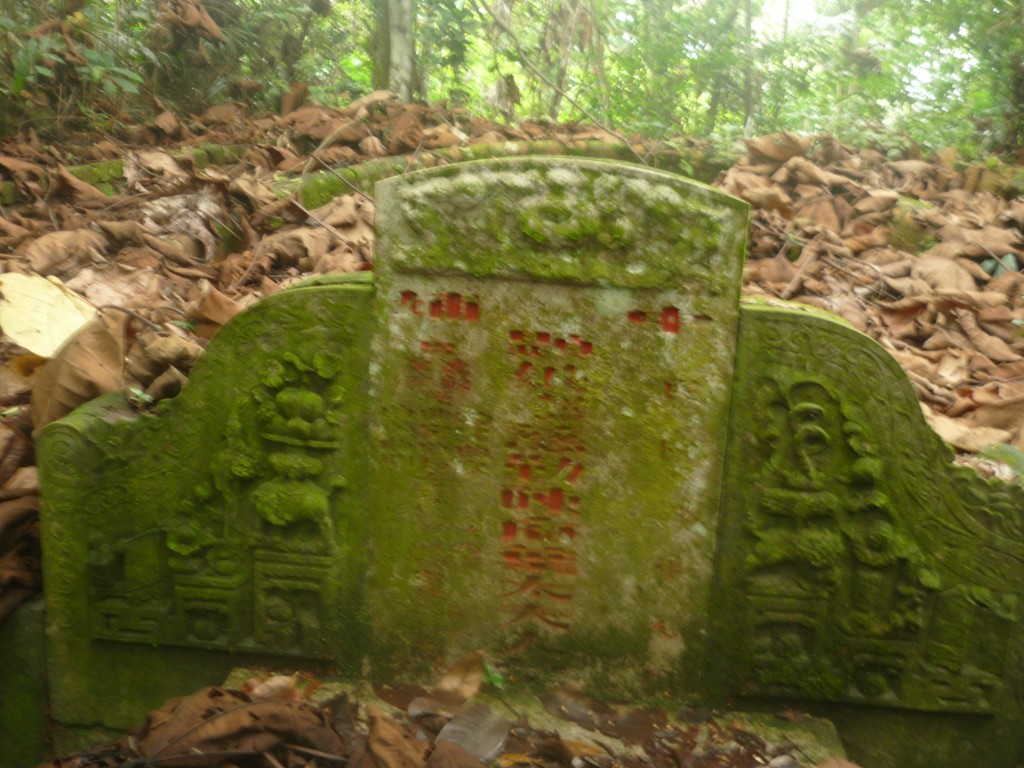

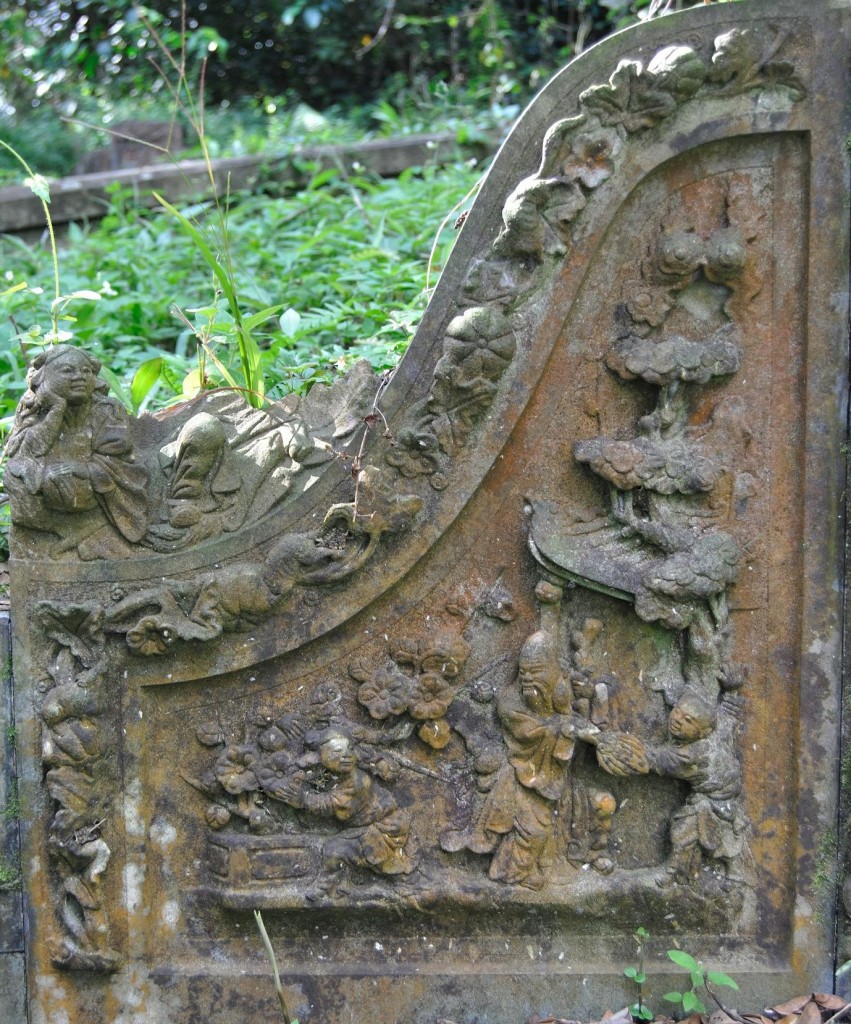
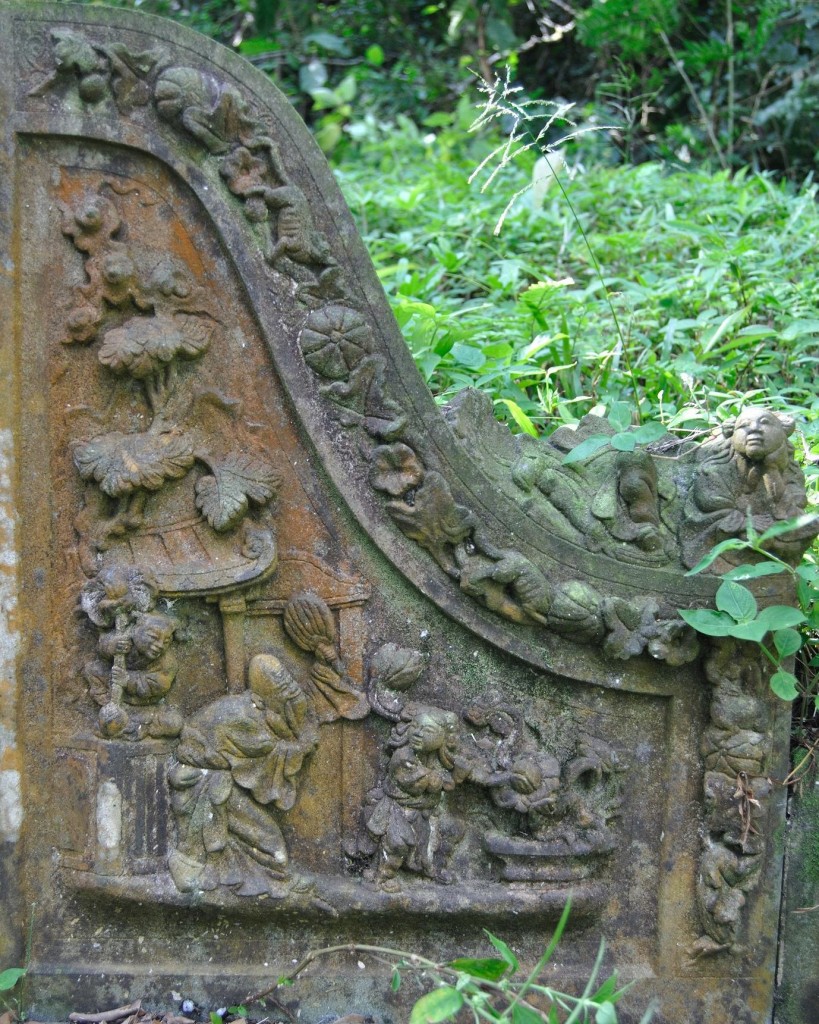
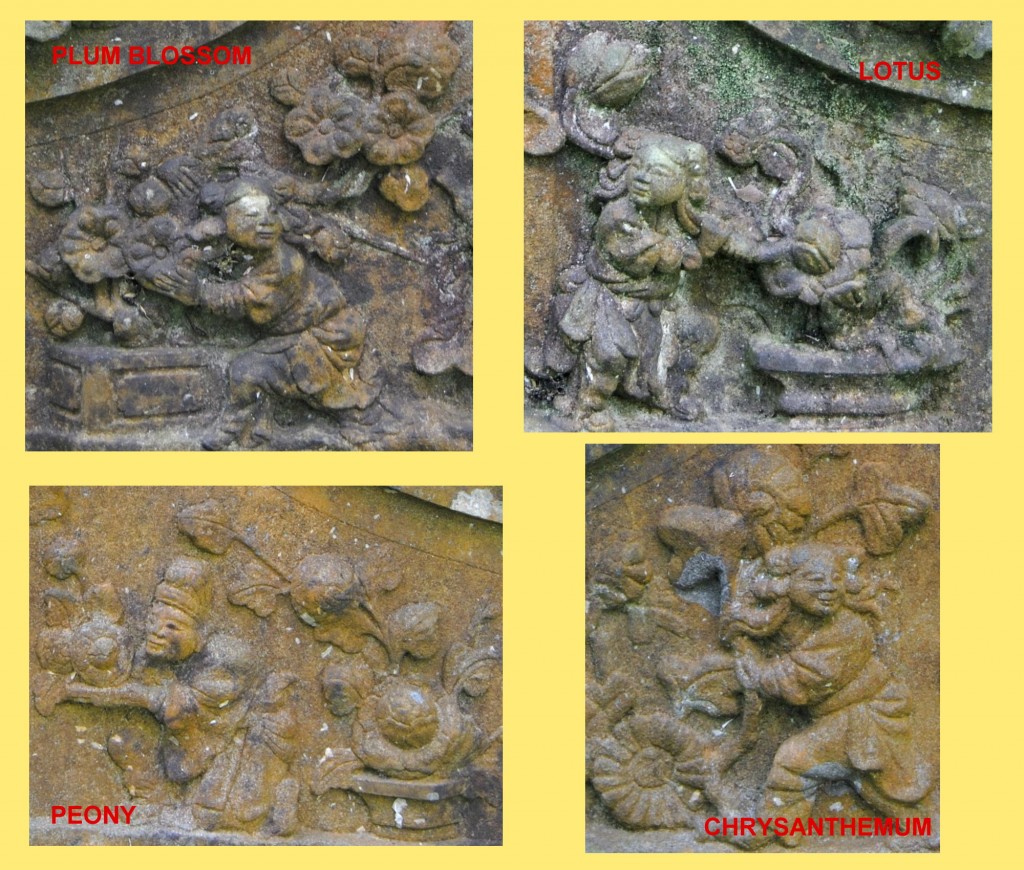
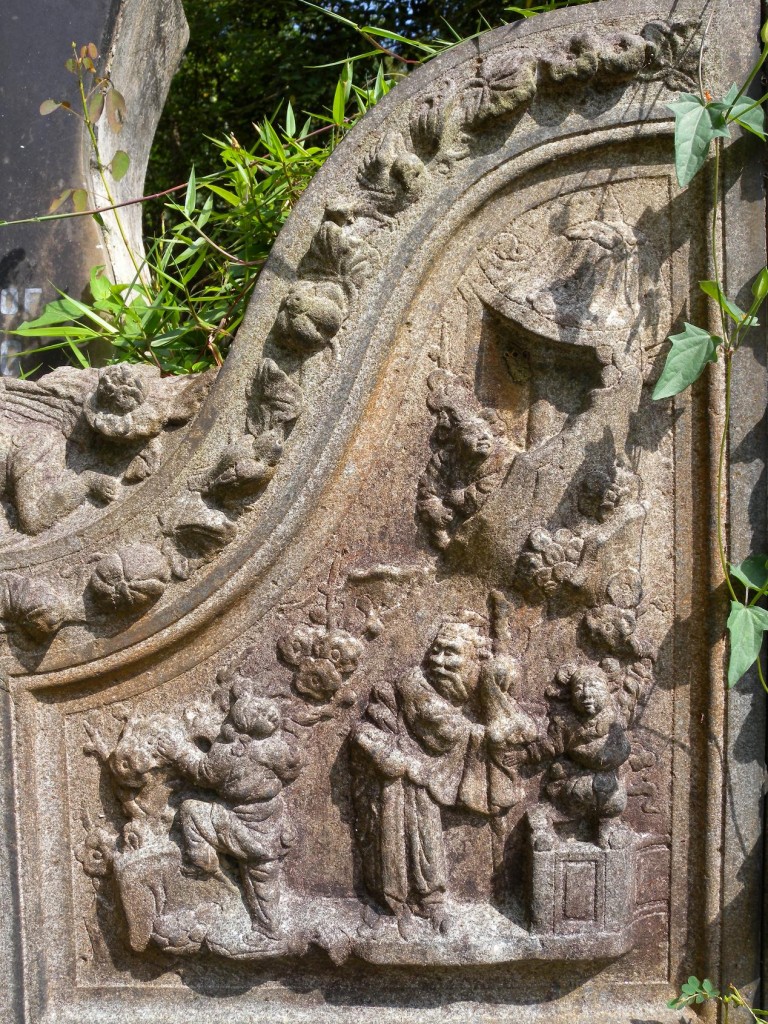
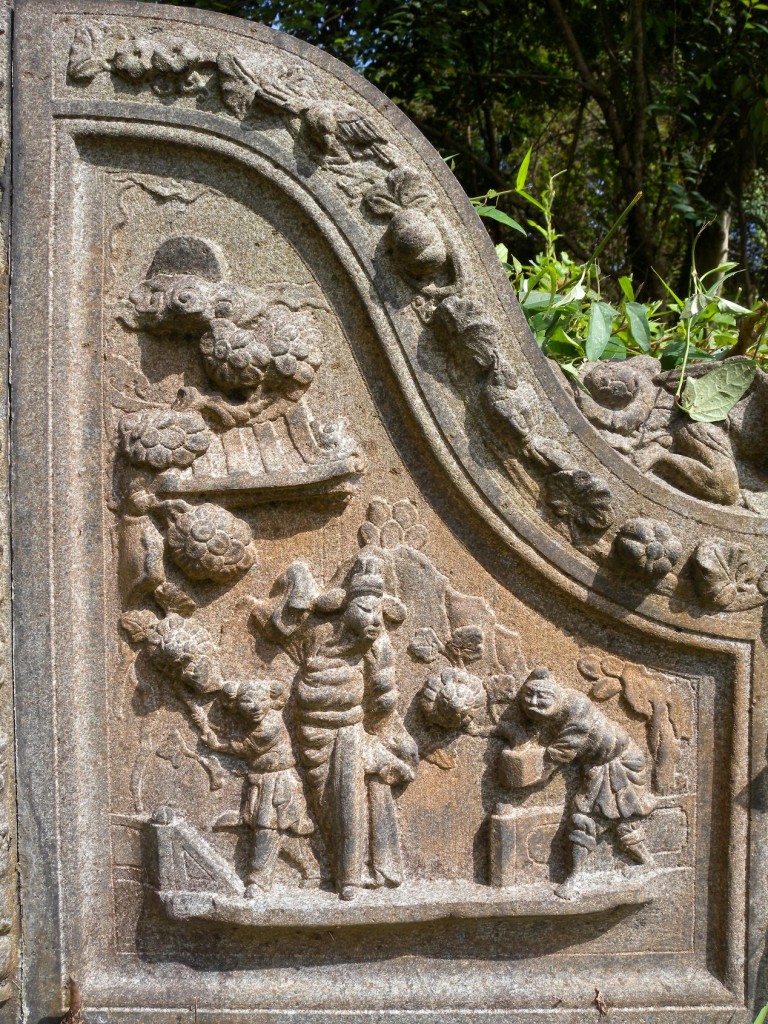
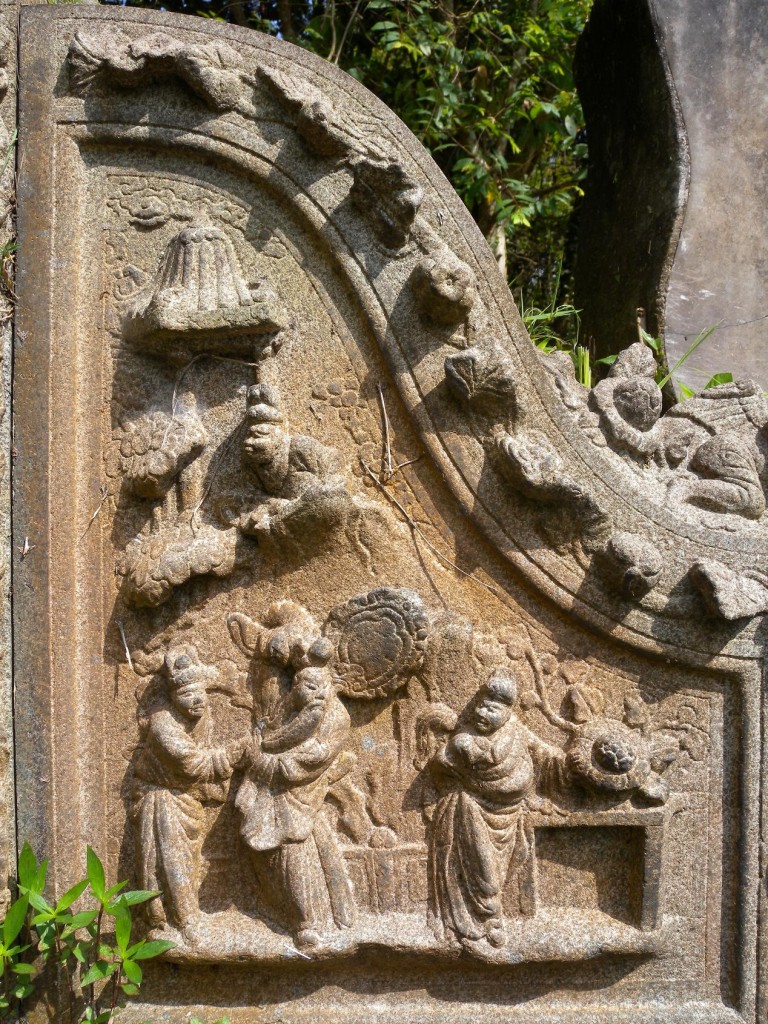
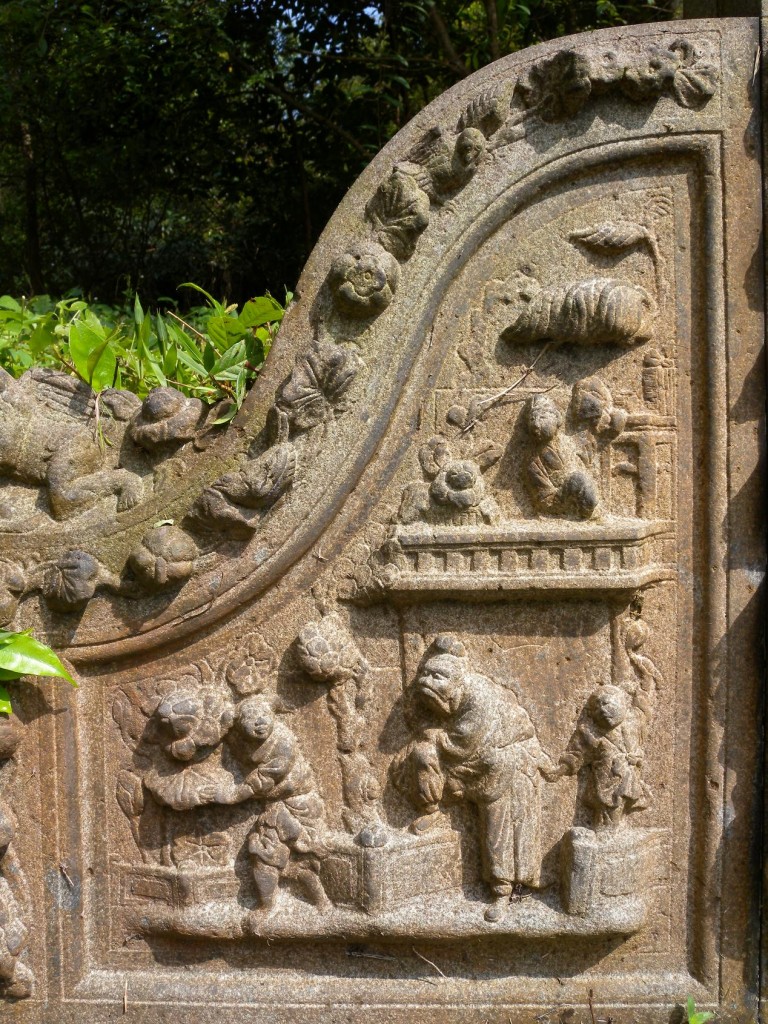
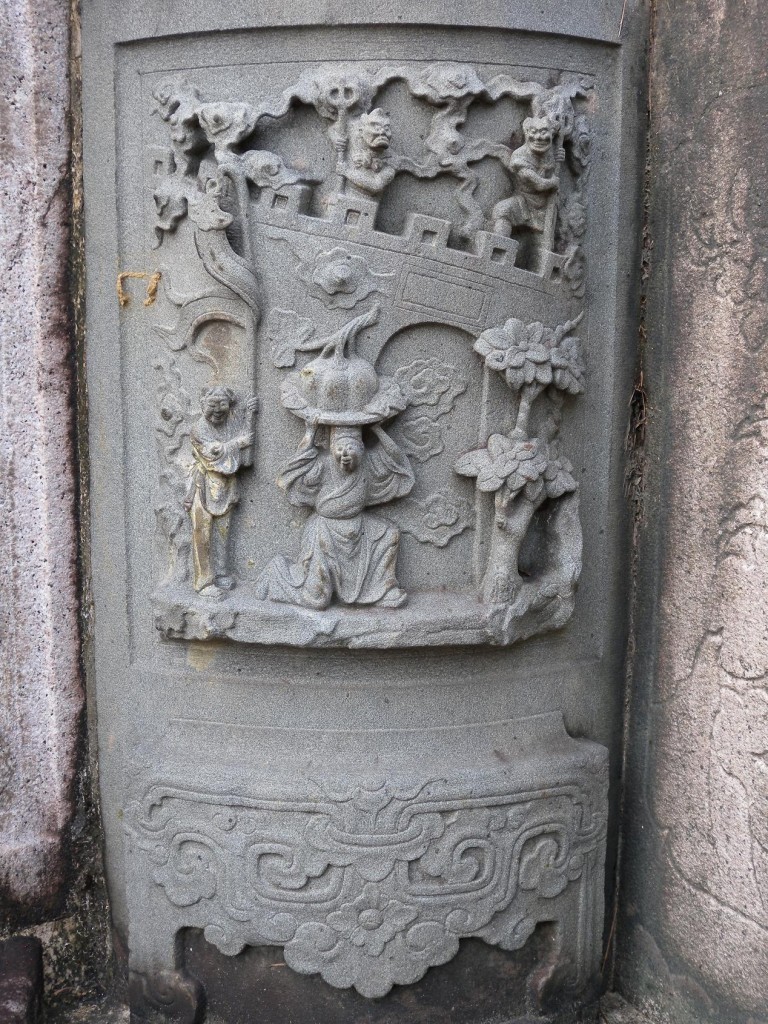

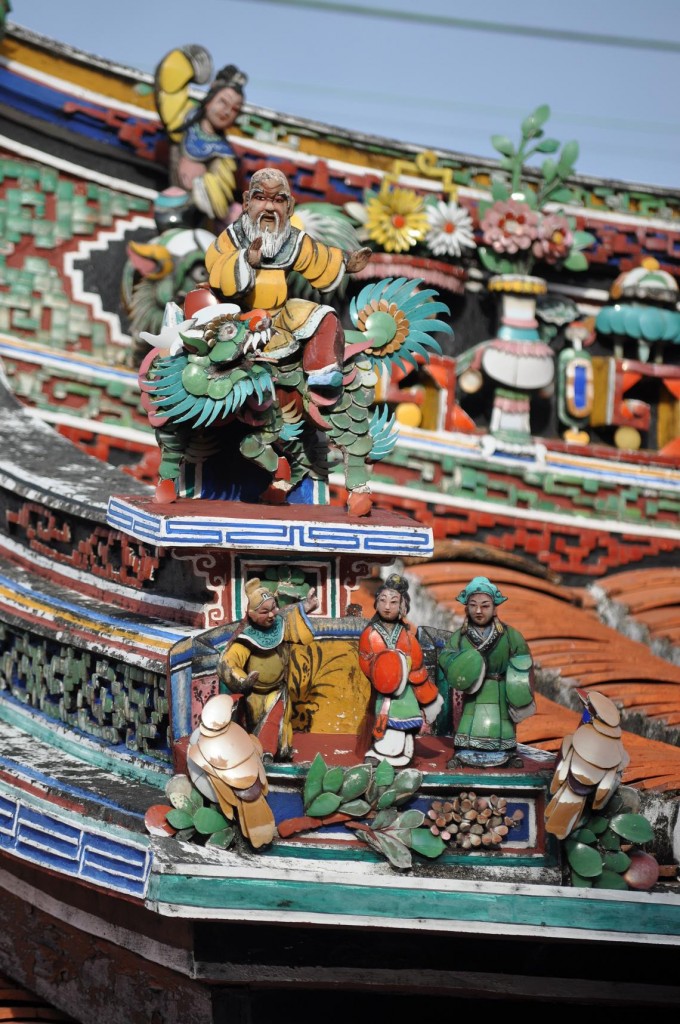
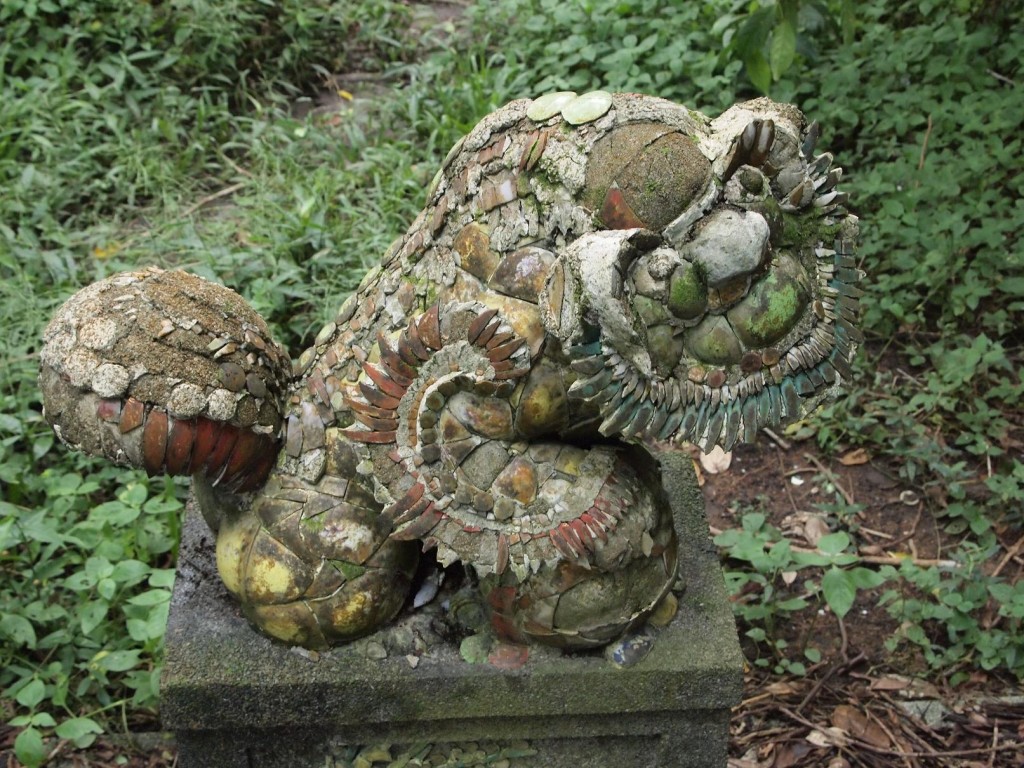
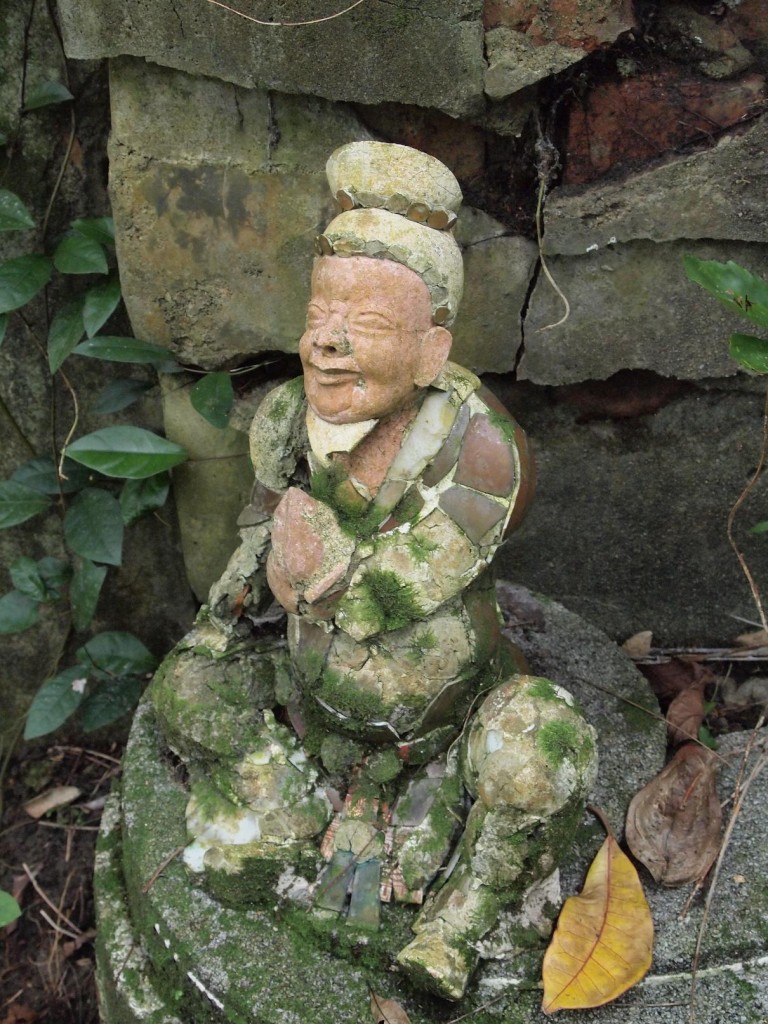
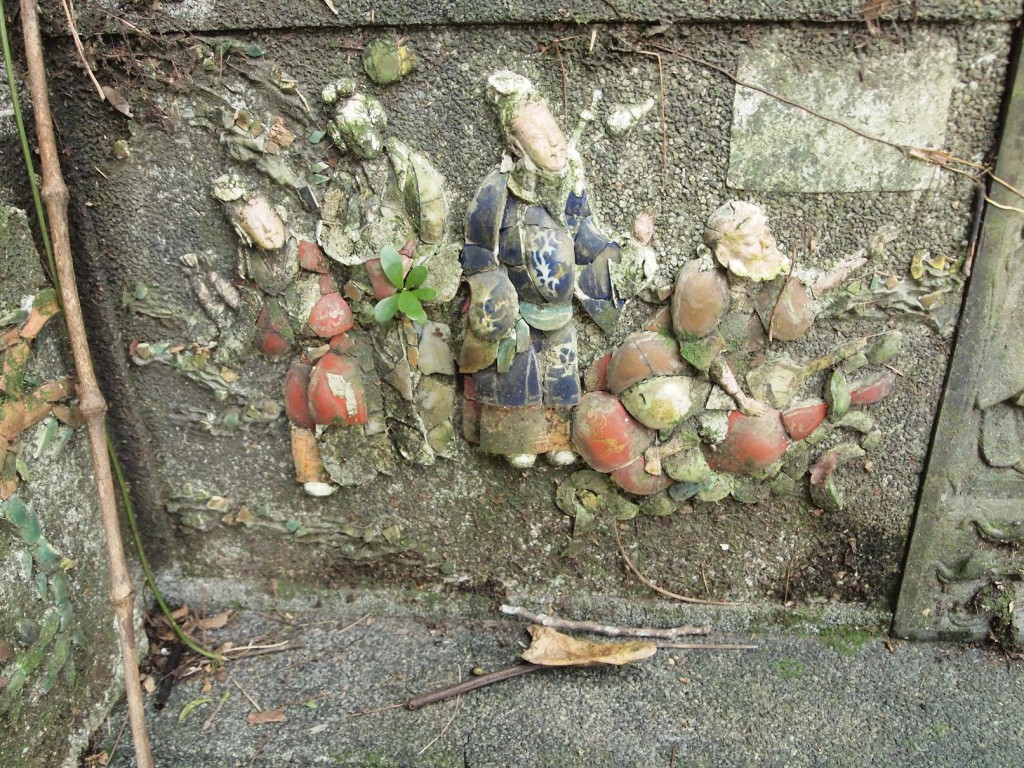
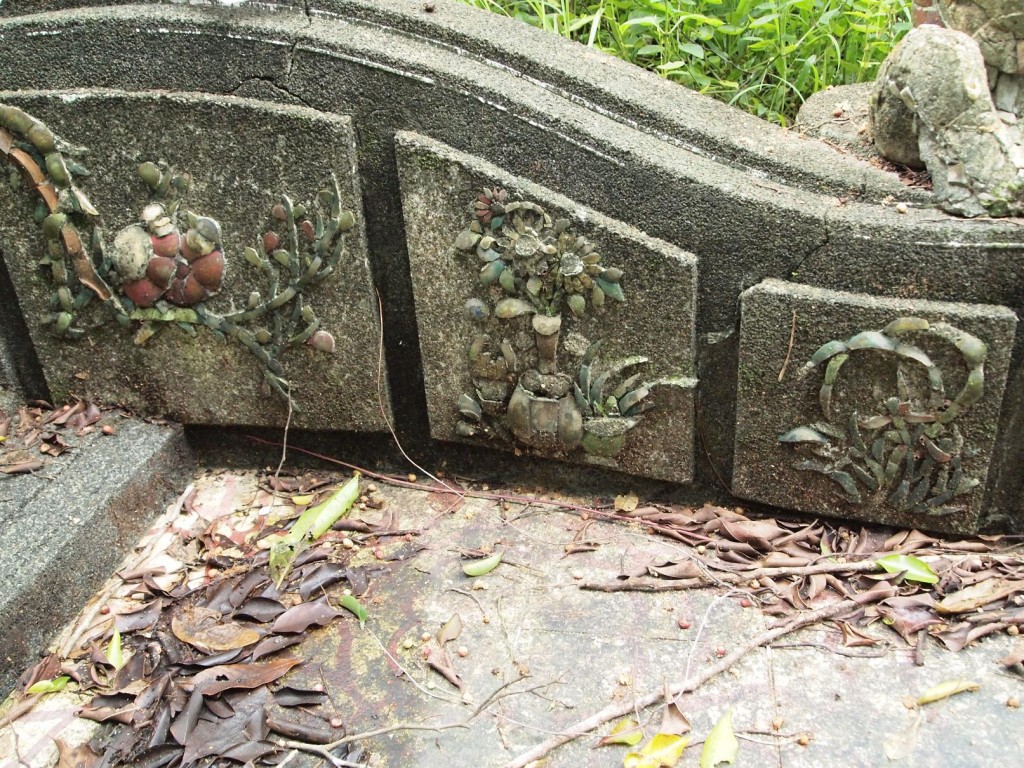
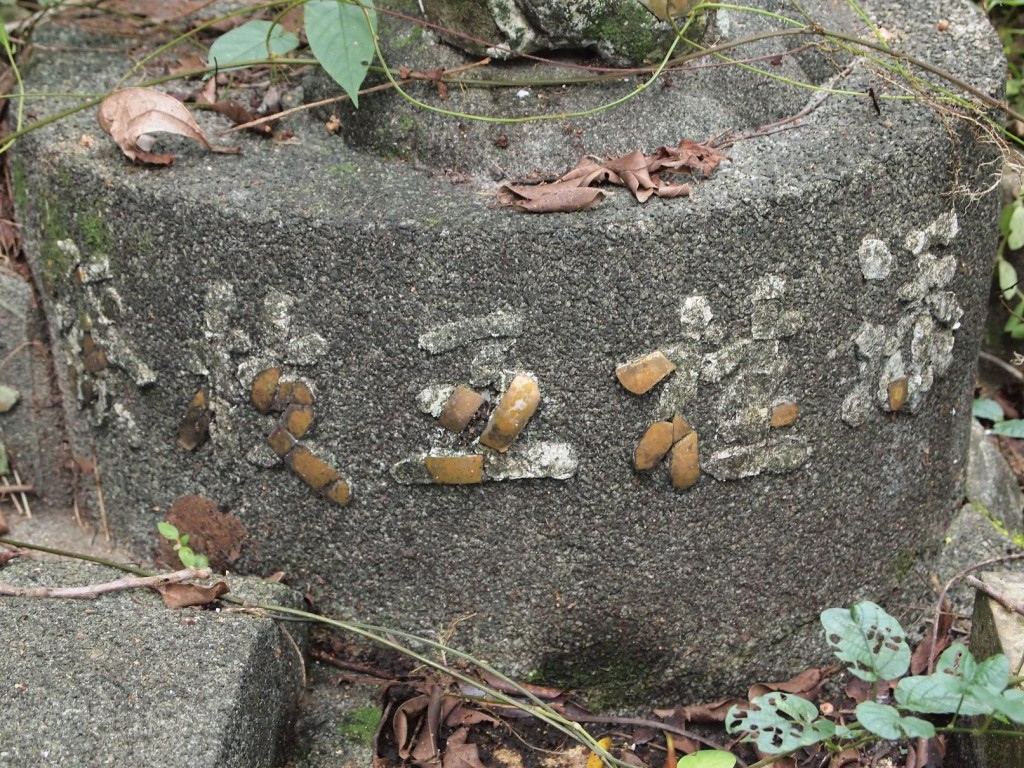



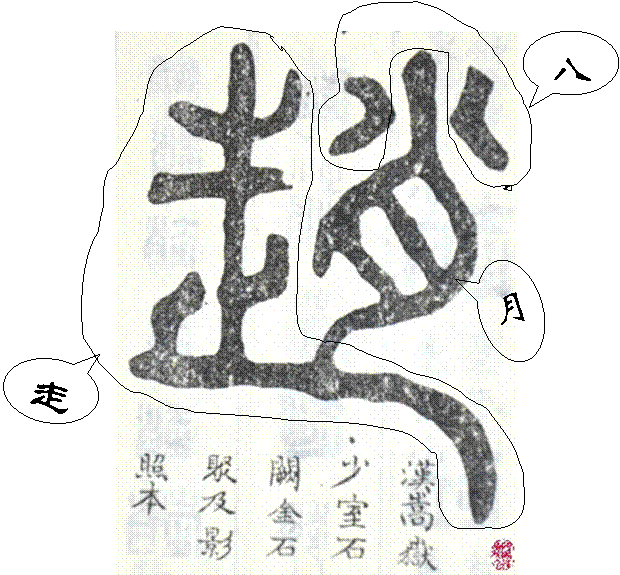
Recent Comments